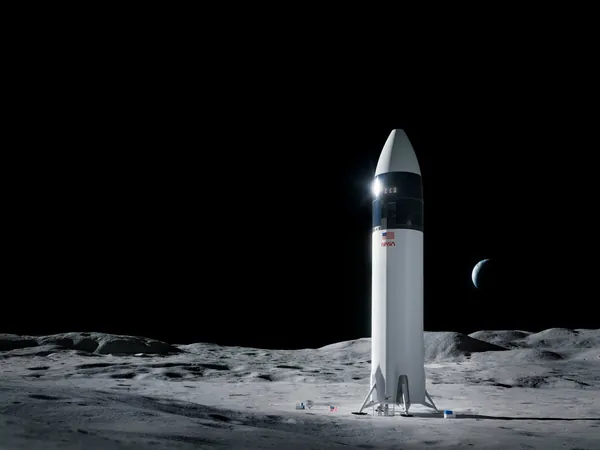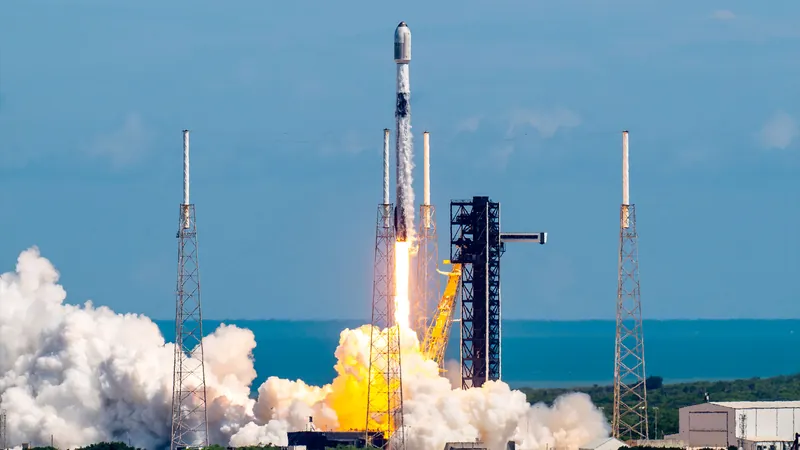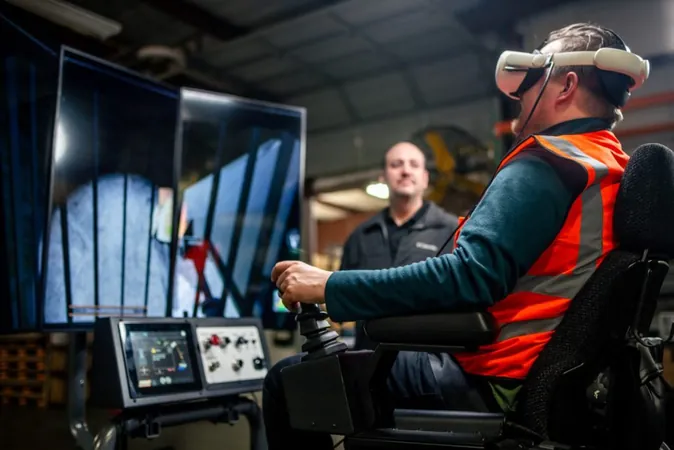
The Artemis Program: Paving the Way for a New Era of Lunar Exploration
2025-01-01
Author: William
Sixty-five years ago, the world stood in awe as the USSR fired the first robotic spacecraft, Luna 2, toward the Moon, igniting a race that would change space exploration forever. The historic impact on the lunar surface in 1959 solidified the Space Age, leading to an era where dreams became reality. Just a decade later, Neil Armstrong made his legendary moonwalk, proclaiming, “That’s one small step for man, one giant leap for mankind,” as Apollo 11 captivated billions around the globe. Yet, as political landscapes shifted, humanity briefly lost its lunar focus, leaving the Moon a silvery reminder of past triumphs.
Fast forward to today, the Artemis program is rekindling those ambitions, poised to return humans to the Moon by the next few years. This initiative, backed by the U.S. and international partners, promises to revitalize our exploration of Earth's satellite using cutting-edge technology and innovative partnerships.
The Artemis Initiative: A Bold New Approach
Unlike the original Apollo program, which relied on a single massive Saturn V rocket, Artemis proposes a multi-faceted transportation system involving a variety of crafts and collaborations from NASA and private aerospace companies. Key components include NASA's Space Launch System (SLS) designed by Boeing, SpaceX’s Super Heavy rocket, and Blue Origin’s New Glenn, all complemented by independent lunar landers being developed by SpaceX and Blue Origin. Enhanced astronaut gear and autonomous rovers will facilitate missions at the Moon’s south pole, an area of interest due to the presence of water ice and potential future habitats.
The Artemis 1 mission was a successful uncrewed test flight that launched in November 2022 to evaluate the SLS and Orion spacecraft. Artemis 2, expected to take off in September 2025, aims to send a crew of four, including the mission's first woman alongside a Canadian astronaut, around the Moon in a 10-day mission. This will lead to the highly anticipated Artemis 3, the first crewed landing on the Moon since the Apollo missions, albeit with a revised landing timeline potentially extending to 2028.
Challenges on the Path to the Moon
Despite the ambitious timeline, delays have plagued the Artemis program, reflecting the extraordinary complexities of modern space exploration. One of the key challenges lies in the development of the new spacesuits for astronauts, which must be suitable for long-duration missions in harsh lunar conditions. Under the leadership of Axiom Space, the suits aim to address issues faced during the Apollo missions, such as comfort and wear from lunar dust. The design of the Axiom Extravehicular Mobility Unit (AxEMU) also requires special features to function effectively in extremely low temperatures found in lunar craters.
Moreover, the Artemis program's reliance on multiple rockets to ensure a successful lunar launch increases the risk of delays due to technical challenges. The underperformance of the SpaceX Super Heavy rocket, for instance, could significantly affect the mission timeline and add complexity to lunar supply operations.
The Vision Ahead: Artemis 4 and Beyond
Looking ahead, Artemis 4 aims to establish the Lunar Gateway, a pivotal small space station orbiting the Moon that will serve as a staging area for further exploration missions. The planned Gateway will facilitate ongoing lunar operations and support research vital for future manned missions to Mars. Following Artemis 5, which will utilize Blue Origin's Blue Moon lander for lunar exploration, the program aspires to maintain a steady cadence of missions to ensure a sustained human presence on the Moon.
Despite the serious technical and financial challenges, the Artemis program's vision remains steadfast. The collaborative efforts of international partners promise a brighter future for lunar exploration, returning humanity to its celestial neighbor and reigniting dreams for future generations. As Artemis prepares for this next chapter, the anticipation builds: when will we once again leave footprints on the lunar landscape, joining the legacy of Apollo astronauts who first ventured into the night sky? The answers lie in the bold innovations and aspirations of mankind’s next journey to the Moon.









 Brasil (PT)
Brasil (PT)
 Canada (EN)
Canada (EN)
 Chile (ES)
Chile (ES)
 Česko (CS)
Česko (CS)
 대한민국 (KO)
대한민국 (KO)
 España (ES)
España (ES)
 France (FR)
France (FR)
 Hong Kong (EN)
Hong Kong (EN)
 Italia (IT)
Italia (IT)
 日本 (JA)
日本 (JA)
 Magyarország (HU)
Magyarország (HU)
 Norge (NO)
Norge (NO)
 Polska (PL)
Polska (PL)
 Schweiz (DE)
Schweiz (DE)
 Singapore (EN)
Singapore (EN)
 Sverige (SV)
Sverige (SV)
 Suomi (FI)
Suomi (FI)
 Türkiye (TR)
Türkiye (TR)
 الإمارات العربية المتحدة (AR)
الإمارات العربية المتحدة (AR)